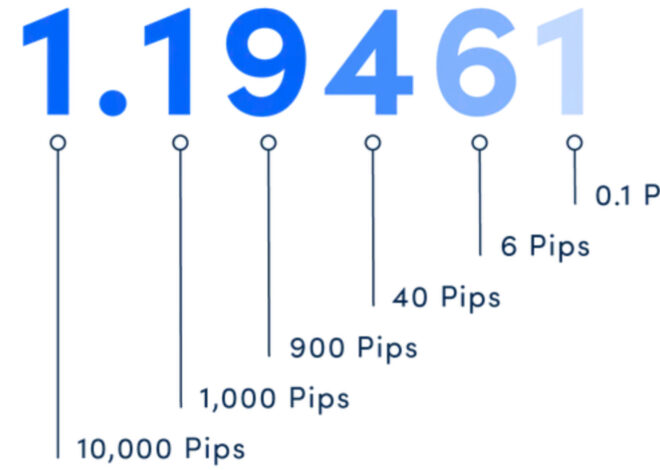
How to Read Forex Trading Charts
Understanding Forex Trading Charts: A Comprehensive Guide
Forex trading, or foreign exchange trading, involves buying and selling currencies based on their value relative to one another. Successful trading relies heavily on the ability to read and interpret Forex trading charts effectively. This article will provide a detailed guide on how to read Forex trading charts, covering key components, types of charts, price patterns, technical indicators, and strategies to optimize your trading.
Key Components of Forex Charts: What You Need to Know
Before delving into Forex trading charts, it’s crucial to understand their basic components:
- Price: The value of a currency pair expressed in another currency.
- Timeframe: The period over which price movements are measured, ranging from minutes to months.
- Volume: The total amount of currency traded in a given timeframe, indicating market activity.
- Bid/Ask Spread: The difference between the buying (ask) price and selling (bid) price.
Understanding these components is essential for accurate chart analysis and can help inform your trading decisions.
Types of Forex Charts: Choosing the Right One for You
Forex traders utilize various types of charts, each offering unique advantages. Here are the three most common chart types:
- Line Chart:
- Description: Connects closing prices over a specified period, providing a simple visual representation of price movements.
- Best For: Beginners who want to quickly gauge market trends without complex details.
- Bar Chart:
- Description: Displays the open, high, low, and close (OHLC) prices for a given period, providing more information than a line chart.
- Best For: Traders who want a detailed view of price action and understand the dynamics of price movements.
- Candlestick Chart:
- Description: Similar to bar charts, candlesticks show the OHLC prices but use colored bodies to indicate whether the closing price was higher or lower than the opening price.
- Best For: Advanced traders looking to analyze market sentiment and identify patterns more easily.
| Chart Type | Advantages | Ideal For |
|---|---|---|
| Line Chart | Easy to read, good for trends | Beginners |
| Bar Chart | Detailed price information | Intermediate traders |
| Candlestick Chart | Visual patterns, market psychology | Advanced traders |
Analyzing Price Patterns: Insights from Historical Data
Price patterns are indicative of potential future price movements. Here are a few common patterns to watch for:
- Head and Shoulders: This pattern often indicates a reversal in trends, with the price forming three peaks—two smaller ones (shoulders) surrounding a larger peak (head).
- Double Top/Bottom: A double top occurs after an uptrend and signals a possible reversal, while a double bottom appears after a downtrend, suggesting a potential upward reversal.
- Triangles: Symmetrical, ascending, and descending triangles indicate market consolidation before a breakout in price.
Recognizing these patterns can provide valuable insights into future price movements, helping traders make informed decisions.

Technical Indicators: Enhancing Your Chart Analysis Skills
Technical indicators are mathematical calculations based on price and volume data, assisting traders in determining trends and market conditions. Here are a few essential indicators:
- Moving Averages (MA):
- Helps smooth out price data to identify the direction of the trend.
- Common types: Simple Moving Average (SMA) and Exponential Moving Average (EMA).
- Relative Strength Index (RSI):
- Measures the speed and change of price movements to identify overbought or oversold conditions.
- Values range from 0 to 100; typically, an RSI above 70 indicates overbought conditions, while below 30 indicates oversold.
- Bollinger Bands:
- Consists of a middle band (SMA) and two outer bands that indicate volatility.
- Prices touching the upper band suggest a potential reversal downward, while touching the lower band indicates a possible upward movement.
Developing a Trading Strategy: Reading Charts Effectively
Effective chart reading is crucial for developing a robust trading strategy. Here are steps to consider:
- Determine Your Timeframe: Choose a trading style (scalping, day trading, swing trading) that suits your lifestyle and personality.
- Set Entry and Exit Points: Based on your analysis, identify where you plan to enter and exit trades. Use price patterns and technical indicators to support your decisions.
- Risk Management: Establish stop-loss and take-profit levels to protect your capital and lock in profits.
- Backtest Your Strategy: Review historical data to assess the potential effectiveness of your strategy before applying it in live trading.
By following these steps, you can develop a disciplined approach to Forex trading, enhancing your chances of success.
Conclusion
Reading Forex trading charts is an indispensable skill for traders at all levels. By understanding the key components of charts, choosing the right chart type, analyzing price patterns, utilizing technical indicators, and developing a solid trading strategy, you will be better equipped to navigate the complexities of Forex markets. As you practice and refine your chart-reading skills, you will gain the confidence needed to make informed trading decisions, ultimately leading to greater success in your Forex trading endeavors.



The section on price patterns is helpful. I will look for head and shoulders in my trading.
I didn’t know about the different types of charts. The explanations are clear!
This article explains Forex charts well. I learned about line and candlestick charts.
‘Risk management’ is so important! Good reminder to set stop-losses.
‘Understanding Forex trading charts’ is a must-read for anyone starting out!
I like how you explained the RSI. It will help me identify market conditions better.
‘Volume’ in trading was unclear to me before; now it makes more sense!
As a beginner, I find the line chart easy to understand. Thanks for this guide!
Technical indicators seem complex, but this article breaks them down nicely.
‘Backtesting’ sounds interesting. I need to try that with my strategy!